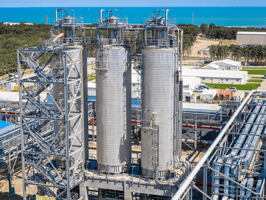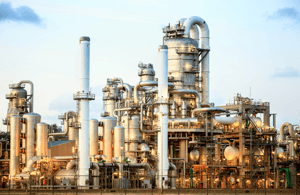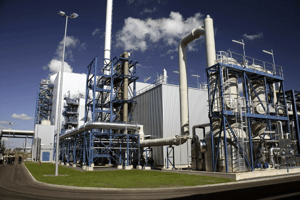
Capabilities



Overview
All modules work together in one intuitive environment with drag-and-drop tools and clear diagnostic features. CHEMCAD also easily links with Excel, enabling automated workflows and streamlined data exchange.
Handles everything from equipment sizing to dynamic simulations, process optimization, and economic analysis.
Supports custom components, user-defined calculations, and a broad thermodynamics library with guided model selection.
Access to expert help, training, and a comprehensive library of articles, guides, and case studies.
Modeling Features
Process design
- Select from a built-in library of components and thermodynamic models.
- Build process flow diagrams using drag-and-drop unit operation symbols from categorized palettes
- Access a message pane to identify simulation warnings, errors, and calculation notes in real time
- Use the Explorer pane to navigate between unit operations, streams, and analysis tools
- Quickly navigate to commands and calculation options through a tabbed ribbon menu, or customize the interface to prioritize frequently used commands
- Create equipment and stream property tables that appear directly on the flowsheet or generate detailed, customizable reports and spec sheets
- Overlay design notes, text, and symbols for improved communication in process layouts

Equipment sizing & rating
- Size heat exchangers, including shell-and-tube, plate, and air-cooled designs, with detailed thermal and hydraulic calculations
- Determine vessel dimensions, including diameter, height, and internal configuration, based on process requirements
- Calculate pressure drops for piping systems, including fittings, valves, and elevation changes
- Model compressors, expanders, and pumps with flexible input modes, performance curves, and calculated efficiency and power
- Evaluate and configure relief devices, accounting for overpressure scenarios and applicable standards
- Analyze temperature and pressure trends for individual flowsheet elements across a range of operating conditions
- Model column internals for distillation, absorption, and stripping operations with tray or packing specifications
- Perform thermophysical property calculations for pure components and mixtures
- Calculate bubble point and dew point temperatures or pressures for mixtures at specified conditions

Advanced simulation & scaling
- Set up steady-state and dynamic simulations within the same interface to evaluate both normal operation and transient conditions
- Conduct process scale-up studies, transitioning designs from pilot plant to full-scale operation
- Reconcile process data with experimental or plant measurements to validate and refine models
- Optimize process configurations to improve energy efficiency and reduce utility consumption
- Evaluate process intensification strategies, such as combining operations or using alternative equipment designs
- Perform economic evaluations to estimate capital and operating costs for proposed process changes
- Analyze process sensitivity to feed composition, equipment performance, or operating conditions
- Simulate startup, shutdown, and upset conditions for operational planning and safety review

Customization & extensibility
- Create custom unit operations to represent specialized equipment or proprietary processes
- Develop and integrate user-defined thermodynamic models for unique or complex mixtures
- Add custom chemical components with user-specified physical and thermodynamic property data
- Incorporate property calculation routines written in C++, or other supported programming languages
- Link Excel spreadsheets for bidirectional data exchange and calculation control
- Use inline C programming to embed specialized engineering calculations directly in simulations
- Import and export data to third-party modeling tools or plant data historians
- Create and store reusable templates for common process configurations
- Adapt simulation workflows to meet company-specific standards and regulatory requirements

Reports & integration
- Generate detailed simulation reports summarizing equipment specifications, stream properties, and calculation results
- Produce graphical outputs such as process flow diagrams, charts, and trend plots for documentation and analysis
- Export simulation data to Microsoft Word, Excel, or WordPad for further formatting or inclusion in reports
- Create custom report templates to meet company or client documentation standards
- Print complete flowsheets with customizable title blocks, annotations, or legends
- Link simulations to Excel for live data updates and automated calculations
- Integrate with process control and operator training systems for real-time model interaction
- Use supported communication protocols (OPC, COM) for data exchange with external applications

Ensure Safety & Compliance
Safety relief & pressure codes
- Simulate pressure relief devices and safety scenarios
- Model piping networks and pressure drop behavior under different operational conditions
- Evaluate compliance with relief and depressurization standards

Exchanger & heat transfer standards
- Size heat exchangers using standard design practices for shell-and-tube, plate, and air-cooled units
- Apply accepted methods for thermal and hydraulic calculations
- Test performance under varying scenarios to support industry codes

Equipment or piping design & rating
- Generate design data or rate existing vessels, pumps, compressors, and columns to align with process needs and engineering standards
- Assess pressure drops and flow distribution in piping systems
- Provide modeling support compatible with recognized design criteria

Thermodynamics & property modeling
- Use established models for vapor-liquid equilibrium, enthalpy, and other property calculations
- Support selection and validation of models per widely accepted thermodynamic conventions
- Enable regression of component data to align with published or experimental data

Reporting & regulatory documentation
- Produce structured outputs for review against regulatory and engineering standards
- Export consistent reports, diagrams, and charts for audits or compliance documentation
- Customize templates to fit internal or external regulatory formats

Dynamic Partnerships
CHEMCAD maintains industry partnerships to extend simulation capabilities with advanced data analysis, custom calculations, and specialized modeling tools.
FERST, provided by Fauske & Associates, is a complete package that merges practical and easy-to-use methods with the material property, thermodynamics, and the software development expertise of CHEMCAD.
Build custom unit models or calculations in MATLAB to integrate with a CHEMCAD process flowsheet through data exchange tools.
Discuss your chemical process simulation projects with one of our experts.
I love how easy it was to learn how to use this software -- modeling the chemical reactions/components we need took very little time.”